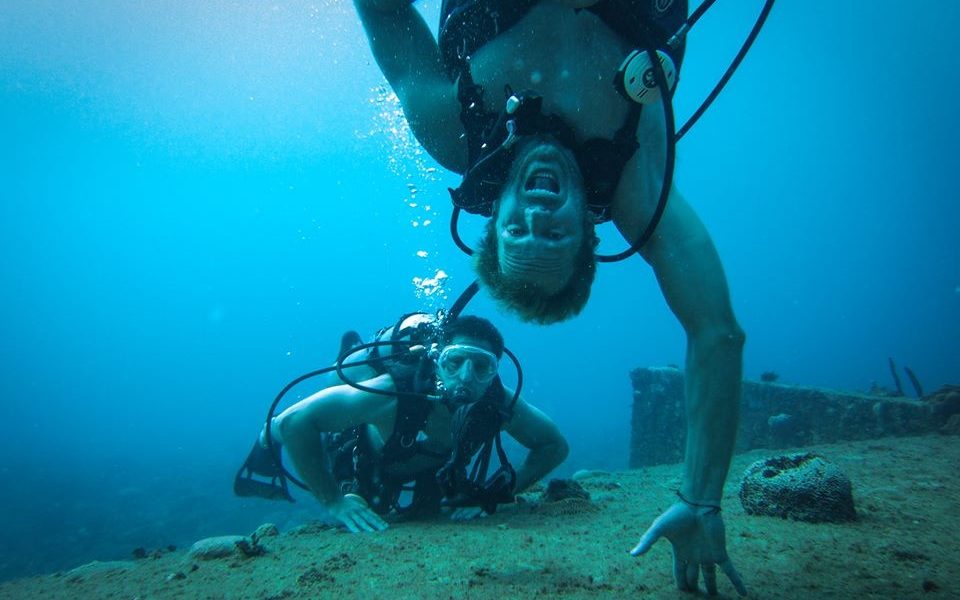

Today we’d like to introduce you to Chad Griepentrog.
Chad, let’s start with your story. We’d love to hear how you got started and how the journey has been so far.
I started filming underwater back around 2002. I had been working on “Survivor” and was envious of the guys who got to shoot underwater for the challenges. I immediately got my dive certification and a TRV-900 & Ikelite housing and shot as much as I could in the off season. A few seasons later, I was shooting underwater side by side with some of the most talented guys in the business. Since then, I’ve always taken a camera with me diving around the world- from Palau to the cages of Isle Mujeres to Bora Bora, etc. Working in television was a great way to have access to countless dive attractions shooting both for a variety of shows and on my days off.
I have been shooting stills of people underwater for about four years. It all began when my wife was pregnant with our 2nd child. I was thinking of creative ways to shoot maternity photos of her. I remembered filming underwater behind the scenes on a show where photographers were shooting models in dresses under the surface of a pool years before. They had all sorts of assistants and big egos. I borrowed a dslr and housing from a friend and grabbed some materials from Home Depot and began shooting away. I must say I learned a ton from the feedback my wife gave me (if I wanted it or not). Soon after I began combing the internet for underwater photos and found some others were doing similar shoots. The way I set myself apart from anyone else is to try something new every shoot and always put emphasis on the way I light the models. I’m not very good at photoshop, so I try to capture the best photos I can knowing I won’t be able to fix much of anything later.
Overall, has it been relatively smooth? If not, what were some of the struggles along the way?
It’s been a fairly pretty smooth road only because I do this as a hobby, so it’s low stress. The biggest struggles I’ve had were due to props that wouldn’t sink or pools that were freezing cold. Models are all different and you can usually tell before getting in the water what most of your challenges will be. This isn’t a physical observation but a personality one. The easiest thing to do during a shoot is take photos- the hardest is effectively communicating with the model what you need and how to go about doing it. To some, there’s nothing natural about relaxing underwater in an awkward position while water shoots up your nose.
Alright – so let’s talk business. Tell us about H2oshot – what should we know?
My usual occupation is as a director of photography in television. That entails utilizing lighting and camera equipment to best tell a story. I’ve done all the shows you love to hate, from The Bachelor & Bachelorette to Bravo shows to Intervention to Survivor and so on.
As for the underwater photos, I’m most proud of being 100% self-taught and making a below average website. I’m not computer savvy to say the least.
Any shoutouts? Who else deserves credit in this story – who has played a meaningful role?
I’d say my wife deserves the most credit. She almost always there on shoots, helping by giving tips to the models, fixing wardrobe and hair and keeping me moving at a faster pace than I normally would.
Pricing:
- Underwater shoot with 10 edited high resolution images on a flash card $600
Contact Info:
- Website: h2oshot.com
- Instagram: @h2oshot








Getting in touch: VoyageLA is built on recommendations from the community; it’s how we uncover hidden gems, so if you know someone who deserves recognition please let us know here.



















